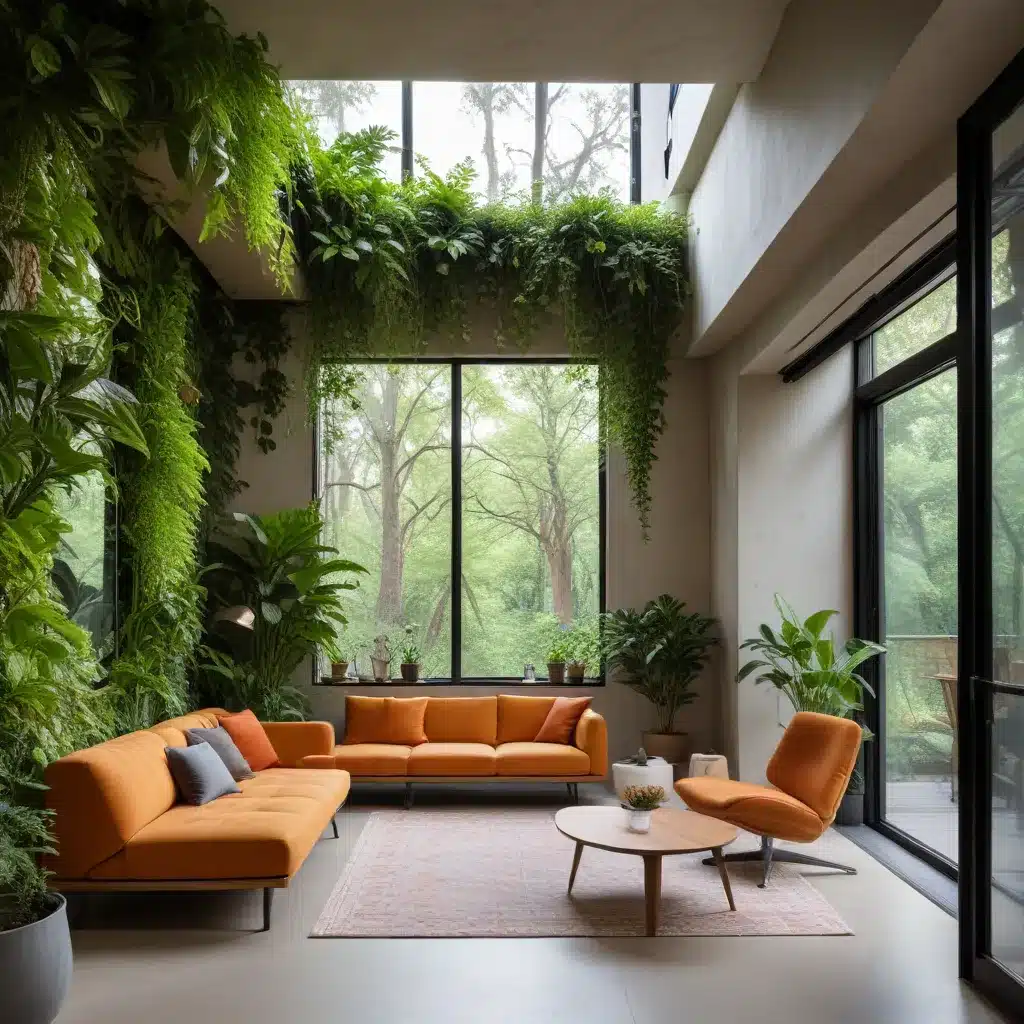
Biophilic Design Principles
An emerging approach to interior design, biophilic design, aims to reconnect us with the natural world by integrating organic elements into our built environments. The term “biophilia” – coined by biologist E.O. Wilson – describes our innate human tendency to seek connections with nature and other living systems. By incorporating biophilic principles, designers can create spaces that not only aesthetic appeal but also enhance our physical and mental well-being.
Natural Materials and Textures
At the heart of biophilic design is the use of natural materials that evoke a sense of warmth and tactility. Replacing synthetic surfaces with wood, stone, bamboo, and other organic elements can instantly make a space feel more grounded and connected to the natural world. Rough-hewn wood beams, river-worn pebbles, and hand-woven rattan furnishings all contribute to a sensory experience that is calming and rejuvenating.
Organic Shapes and Forms
Beyond just materials, biophilic design also embraces the sinuous, asymmetrical forms found in nature. Curvaceous furniture, undulating ceiling lines, and organically-inspired light fixtures can evoke a sense of movement and fluidity that contrasts with the rigid geometries of conventional interiors. These biomorphic shapes and patterns tap into our subconscious preference for the natural world.
Connection to Nature
At the core of biophilic design is the goal of maintaining a tangible link to the outdoors, even in the most urban settings. Abundant natural light, expansive garden views, and the soothing sounds of flowing water can all foster a sense of harmony between the interior and exterior realms. By bringing the outdoors in, biophilic spaces nurture our innate biophilia and satisfy our deep-rooted need for connection with nature.
Compact Interior Challenges
While the principles of biophilic design offer tremendous benefits, their application can pose unique challenges in constrained, compact spaces. Thoughtful planning and creative problem-solving are essential to elevating small interiors with the restorative power of nature.
Space Constraints
Limited square footage can make it difficult to incorporate large-scale natural elements like towering plant walls or expansive windows. Careful space planning and the strategic use of multifunctional furnishings become crucial to maximizing the biophilic potential of compact rooms.
Lighting Considerations
Ensuring adequate natural light can be a significant hurdle in small, urban interiors often shielded from direct sunlight by surrounding buildings. Designers must explore innovative solutions, such as light shelves, skylights, and strategically placed mirrors, to boost natural illumination and create a sense of visual openness.
Furniture Placement
Arranging furniture to optimize sight lines and flow within a compact space can be tricky. Positioning seating areas to take advantage of garden views or aligning workstations with natural light sources requires careful consideration of scale, proportion, and circulation.
Biophilic Elements for Compact Spaces
Despite the challenges, there are numerous ways to infuse biophilic principles into even the most diminutive of interiors. By carefully selecting and arranging the right natural elements, designers can transform cramped quarters into restorative oases.
Living Plants and Greenery
Houseplants are perhaps the most accessible and impactful biophilic feature for compact spaces. From trailing vines to lush ferns, a diverse array of greenery can purify the air, boost mood, and create a sense of visual depth. Vertical gardens and hanging planters are space-efficient solutions that maximize the presence of nature.
Water Features
The soothing, meditative qualities of water make it a valuable biophilic element, even in tight quarters. Compact tabletop fountains, wall-mounted cascades, or minimalist reflecting pools can introduce the calming sound and visual of water without consuming valuable floor space.
Natural Lighting
Thoughtful daylighting strategies are essential for bringing the outdoors into compact interiors. In addition to large windows and skylights, the strategic placement of mirrors and the selection of light-enhancing finishes can amplify the penetration of natural illumination, creating a sense of openness and visual harmony.
Elevating Compact Interiors
By combining these biophilic elements with savvy space planning and multifunctional design, even the most diminutive interiors can be transformed into serene, nature-infused sanctuaries.
Visual Depth and Perspective
Creating the illusion of spatial depth is crucial in compact rooms. Arranging furniture to frame garden views, incorporating mirrors to reflect natural light and greenery, and using vertical elements like shelving and plant stands can all contribute to a greater sense of visual airiness.
Multifunctional Furnishings
To maximize the square footage in small spaces, designers must prioritize multipurpose furniture that serves several functions. An L-shaped sectional that doubles as a chaise lounge, a storage ottoman that provides both seating and hidden storage, or a wall-mounted desk that folds away when not in use can all help strike a balance between form and function.
Zoning and Spatial Organization
Thoughtful zoning and spatial organization are essential for maintaining a sense of flow and balance in compact interiors. Strategically defining distinct areas for work, relaxation, and dining – while ensuring seamless transitions between them – can create the illusion of a larger, more expansive space.
By embracing the principles of biophilic design, even the most diminutive of interiors can be transformed into serene, nature-infused sanctuaries that nourish both the body and the soul. Whether through the strategic placement of living plants, the incorporation of natural lighting, or the selection of organic materials, the integration of these biophilic elements can elevate compact spaces, fostering a greater sense of well-being and connection to the natural world. For more inspiration and guidance on incorporating biophilic design into your home, be sure to explore the resources available at Reluctant Renovator.



